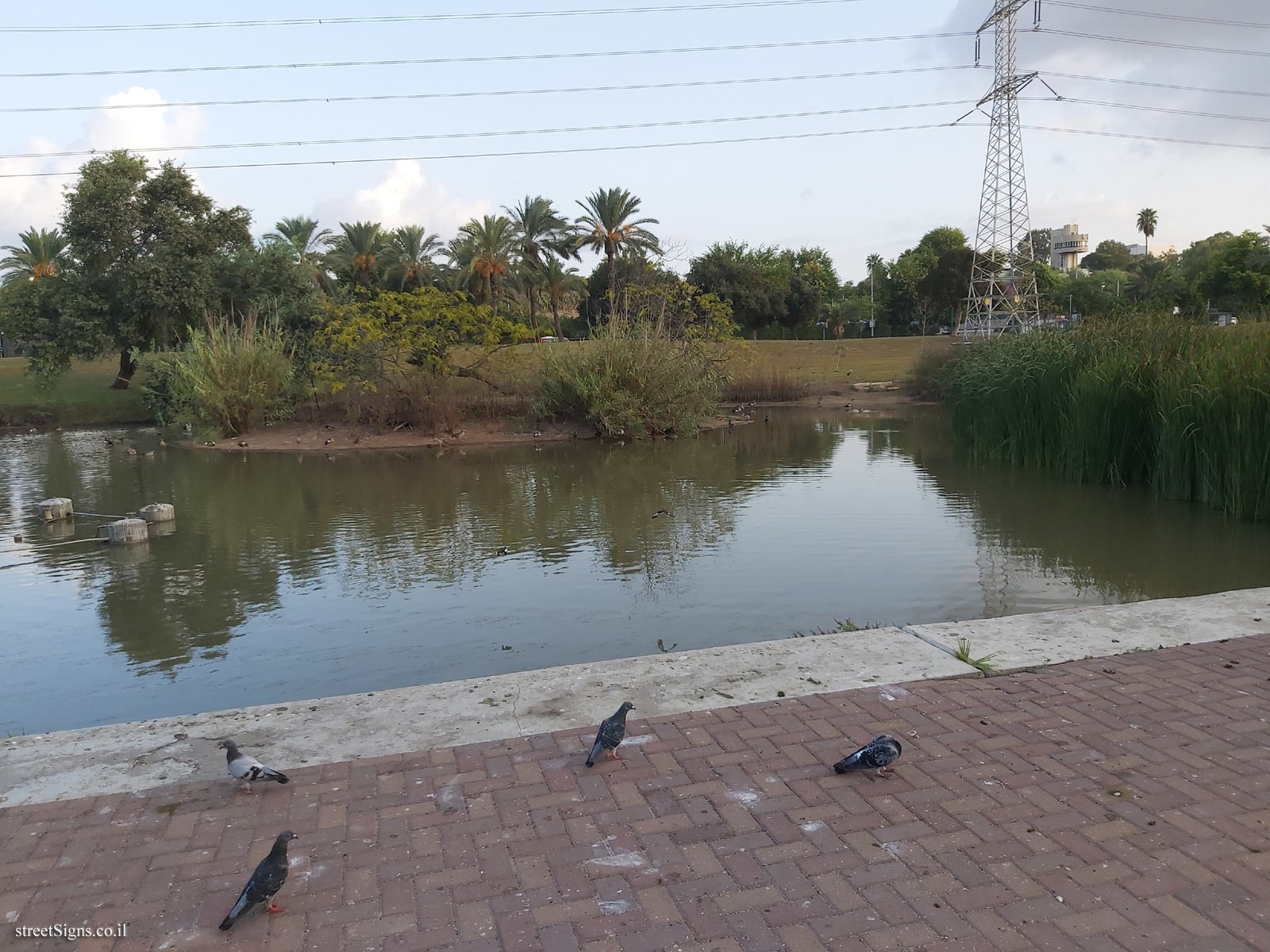A sign from the series of signs scattered along the Yarkon Park and describing the flora and fauna in the park.
On the pillar on which the sign stands is engraved the title of the sign: Variety of vegetation in the Yarkon Reservoir
 Click for a larger image
Click for a larger image The lake next to the sign was photographed that day
 Click for a larger image
Click for a larger image  Click for a larger image Translation of the text on the sign
Click for a larger image Translation of the text on the sign:
Variety of vegetation in the Yarkon Reservoir Branding symbol of the city of Tel Aviv-Yafo
Emblem of the Ganei Yehoshua company
Emblem of the Yarkon River Authority
Purple loosestrife A shrub of riverbanks and springs. Grows in the belt near the water. Has an impressive purple bloom in summer that attracts many pollinators.
Yellow iris A tall perennial geophyte that grows along river banks and at the bottom of swamps, and due to their disappearance has become a rare plant.
Horse mint Fragrant perennial herbaceous that also grows in moist habitats. Has hairy stems and an elongated inflorescence. From its leaves can be made tea or oil which is used for cosmetics.
Vitex agnus-castus inhabits the banks of the perennial and seasonal streams, with an impressive purple inflorescence in summer, and deciduous its leaves in winter. A honey plant that attracts bees and insects.
Frog fruit Perennial creeping herbaceous, occurs in muddy areas and riverbanks. At first its tiny flowers bloom in white and later their color changes to purple.
Great Willow-herb Common perennial stream-bank plant, with a stalk and hairy, sticky leaves. Its flowers are large and attractive thanks to the nectar, butterflies, beetles and bees.
Brook willow Deciduous tree common in moist habitats. Its branches are flexible, reddish in color and dangle to the ground. One of the four species in the sukkah.
Euphrates poplar Tall tree growing along streams. Deciduous in winter and yellowing in autumn. Carries two leaf shapes, some in their youth elongated chisels and some in their puberty broad.
Cyperus papyrus Has grown in the past in various areas along the Yarkon River and in the river sources. In the last century the river landscape has disappeared. Formerly used in the manufacture of paper hence the English word paper.
Typical cross-section of the Yarkon River In the past, this section represented the Yarkon vegetation along the stream and today it appears mainly in the area of its sources. In the section you can see three plant formations on the banks of the stream: vegetation immersed in the water such as
hornwort, floating vegetation such as
blue lotus and stunted vegetation growing on the banks of the stream such as
purple loosestrife and
southern cattail. Some of these species can be found in the Yarkon Reservoir.
Illustration: Tuvia Kurtz, ecological advice: Liav Shalem

 Click for a larger image
Click for a larger image  Click for a larger image
Click for a larger image  Click for a larger image
Click for a larger image